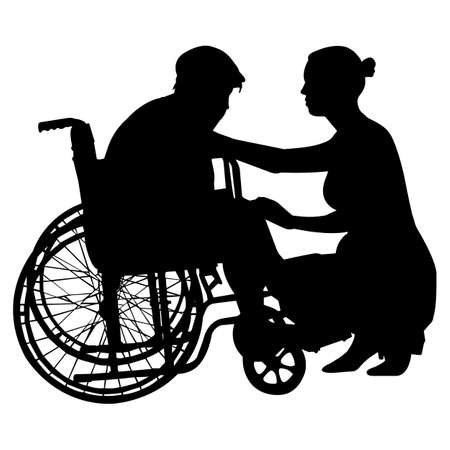Introduction to Assistive Technology and Mobility Aids in the UK
Living with a spinal cord injury (SCI) can dramatically change a person’s life, but advances in assistive technology and mobility aids are helping many people regain independence and confidence. In simple terms, assistive technology includes any equipment, device, or system that helps someone overcome barriers related to disability. This ranges from wheelchairs and walking frames to more high-tech solutions like voice-activated controls or robotic exoskeletons. Mobility aids specifically focus on supporting movement, whether that’s around the home, at work, or out in the community.
In Britain, there is a strong emphasis on supporting people with spinal cord injuries to lead fulfilling lives. The National Health Service (NHS), local councils, and charities work together to provide access to essential aids and services. Rehabilitation for SCI goes beyond just medical care; it includes practical support for daily living, social participation, and employment. The UK approach is holistic, aiming not only to restore physical ability but also to promote mental wellbeing and community integration. By making assistive technologies accessible and tailoring mobility solutions to individual needs, Britain strives to ensure that everyone has the opportunity to live as independently as possible after a spinal cord injury.
NHS and Community Support Services
In Britain, the National Health Service (NHS) plays a pivotal role in supporting individuals with spinal cord injuries through their rehabilitation journey. Access to assistive technology and mobility aids is often coordinated via structured pathways that involve both NHS services and local authority support. Understanding how these systems work together can help individuals, families, and professionals navigate the process more efficiently.
Referral Pathways within the NHS
The journey typically begins when a spinal cord injury is diagnosed or after an acute hospital admission. Patients are referred by their consultant, GP, or hospital discharge team to specialist spinal centres or rehabilitation teams. These referrals trigger multidisciplinary assessments involving physiotherapists, occupational therapists, and social workers to determine what assistive devices or mobility aids are required for the individual’s unique needs.
Assessment Procedures
The assessment process is thorough and person-centred. A team evaluates functional abilities, home environment, and long-term goals. This holistic approach ensures that recommendations for technology or mobility aids—ranging from powered wheelchairs to environmental control systems—are tailored for optimal independence. NHS therapists may arrange trials of equipment and provide training on their use.
Pathway Summary Table
| Stage | Responsible Party | Key Actions |
|---|---|---|
| Initial Referral | GP/Hospital Consultant | Identify needs; refer to spinal/rehab service |
| Multidisciplinary Assessment | Therapists/Social Workers | Evaluate environment, function, preferences |
| Trial & Training | NHS Therapists/Technicians | Select suitable aids; train user in safe operation |
| Ongoing Review | NHS/Community Teams | Monitor progress; adjust support as needed |
Local Authority Support for Securing Technology and Aids
The provision of some assistive technology or home adaptations may fall under the remit of local authorities rather than the NHS. Local council adult social care departments can provide further funding or practical support for items not covered by the NHS, such as home lifts or significant property adaptations. Eligibility is determined through means-tested assessments and care plans.
Navigating Funding Routes in Britain
| Source of Support | What’s Covered? | How to Access? |
|---|---|---|
| NHS Wheelchair Service | Manual/powered wheelchairs, seating solutions | Clinical referral; eligibility assessment required |
| Local Authority Grants (e.g., Disabled Facilities Grant) | Home adaptations: ramps, accessible bathrooms, stairlifts | Council application; means-tested process with OT input |
| Charities & Third Sector (e.g., Motability, SIA) | Add-ons: vehicle adaptations, tech not funded elsewhere | Apply directly to charity; supporting documentation often needed |
This close collaboration between NHS services and community agencies helps ensure that people living with spinal cord injuries in Britain can access essential technology and aids throughout their rehabilitation journey, promoting independence and quality of life.

3. Types of Assistive Technology Available
For individuals with spinal cord injuries in Britain, a range of assistive technologies are available to support independence, communication, and daily living. These devices play a vital role in rehabilitation and long-term quality of life. Below is an overview of commonly used technologies tailored for the UK context.
Environmental Control Systems (ECS)
Environmental control systems are widely adopted across British homes and rehabilitation centres. These systems enable users to manage household functions—such as lighting, heating, doors, and entertainment devices—through accessible interfaces. Many ECS units in the UK are compatible with local smart home standards and can be operated using switches, touch screens, or even eye-tracking technology. NHS services often work alongside occupational therapists to assess individual needs and recommend suitable solutions.
Voice-Activated Technology
Voice control is increasingly popular, offering hands-free operation for those with limited upper limb mobility. Devices like Amazon Alexa and Google Home are commonly integrated into British homes, allowing users to control appliances, make phone calls, or send messages simply by speaking. Voice recognition software on smartphones and tablets also supports text dictation and internet access, making daily tasks more manageable.
Computer Access Tools
Accessing computers is essential for social connection and work. In the UK, adaptive keyboards, mouse alternatives (such as trackballs and head mice), and speech recognition programs are widely available through both private suppliers and the NHS wheelchair service referral system. Specialist software enables screen reading or magnification for those with visual impairments as well.
Switch Access Devices
Switches come in many forms—such as button presses or sip-and-puff controls—and can be tailored to individual abilities. These are particularly useful for activating communication aids or controlling wheelchairs in a straightforward manner.
Integration with British Health Services
The provision of these technologies often involves collaboration between NHS therapists, social care teams, and charities such as the Spinal Injuries Association. Assessment for the most suitable device is standard practice before funding or installation decisions are made.
In summary, assistive technology options in Britain are comprehensive and continually evolving, ensuring that people with spinal cord injuries have access to tools that promote autonomy and participation in everyday life.
4. Mobility Aids: From Manual to Powered Solutions
For individuals with spinal cord injuries in Britain, mobility aids are a cornerstone of rehabilitation and daily life. The NHS and local authorities provide a range of devices tailored to differing levels of mobility and independence. Understanding the types of aids available, as well as the criteria for accessing them, is essential for those navigating the UK healthcare system.
Types of Mobility Aids Available
| Aid Type | Description | Common Providers | Typical Users |
|---|---|---|---|
| Manual Wheelchairs | Self-propelled or attendant-propelled chairs suitable for those with upper body strength or who need basic mobility support. | NHS Wheelchair Services, private suppliers | Individuals with partial paralysis or good arm function |
| Powered Wheelchairs | Battery-operated chairs controlled by a joystick; designed for users with limited strength or endurance. | NHS, Motability Scheme, charities | Individuals with higher-level injuries or limited upper body function |
| Scooters | Mobility scooters for outdoor use, offering more freedom for community access but not typically prescribed for indoor use. | Private purchase, some local authority schemes, Motability | People with reasonable upper body control and less complex needs |
| Walkers & Rollators | Wheeled or non-wheeled frames that assist with stability and balance during ambulation. | NHS physiotherapy departments, social care teams | Those with incomplete spinal injuries or recovering mobility |
| Standing Aids & Frames | Devices that support standing posture; may be manual or powered and sometimes integrate into wheelchairs. | NHS specialist services, rehabilitation centres | Users needing weight-bearing or therapeutic standing options |
Criteria for Provision and Access in the UK System
The NHS has established guidelines to ensure equitable access to mobility aids:
- Clinical Assessment: A multidisciplinary team evaluates medical necessity based on injury level, prognosis, and functional goals.
- User Safety: Safety in use at home and in public spaces is a key criterion; environmental assessments may be conducted.
- Lifestyle Needs: Considerations include employment, education, family life, and leisure activities.
- Funding Pathways: Basic models are usually provided free of charge through NHS Wheelchair Services. Upgrades (e.g., lighter frames, advanced controls) may require personal contribution or charitable funding.
- Review and Maintenance: Regular reviews ensure continued suitability; servicing is managed by NHS-contracted providers or via insurance if privately purchased.
Navigating the Application Process
The journey often begins with referral from a GP or hospital team to the local wheelchair service. Waiting times can vary by region; meanwhile, interim solutions such as loaned equipment from Red Cross branches may bridge the gap. Documentation—such as proof of address and clinical reports—is usually required. For powered options under schemes like Motability, eligibility for certain disability benefits (e.g., Higher Rate Mobility Component of PIP) is necessary.
A Note on Individual Choice and Advocacy
The UK approach strives to match each person’s needs with appropriate technology. However, resource limitations mean users sometimes advocate for specific features—such as custom seating or off-road capability—through appeals or charity support. Collaboration between service users, clinicians, and suppliers remains crucial for optimal outcomes.
5. Accessing and Funding Equipment in Britain
Securing the right assistive technology and mobility aids for spinal cord injury rehabilitation often comes down to navigating funding routes and knowing where to turn for support. In Britain, there is a blend of statutory provision, charitable grants, and private purchase options. Understanding these pathways can save time, money, and frustration.
NHS Provision: The First Port of Call
The NHS supplies a range of mobility aids—such as manual wheelchairs and basic assistive devices—following assessment by an occupational therapist or physiotherapist. However, more specialised equipment, like powered wheelchairs with advanced features or bespoke home adaptations, may not always be covered. It’s important to have detailed discussions with your clinical team about what the NHS can provide versus what you might need to seek elsewhere.
Charitable Support: Key Organisations
Several UK charities offer grants or direct provision of equipment for those living with spinal cord injuries. The Spinal Injuries Association (SIA) is a leading source of information, peer support, and occasionally grant advice. Meanwhile, Back Up Trust provides practical courses and some financial assistance towards equipment. For vehicle adaptations or accessible vehicles, the Motability Scheme enables eligible individuals receiving certain disability benefits to lease a car, scooter, or powered wheelchair using their mobility allowance.
Navigating the Motability Scheme
If you receive the Higher Rate Mobility Component of Disability Living Allowance (DLA), Personal Independence Payment (PIP) mobility component, or War Pensioners’ Mobility Supplement, you may qualify for Motability. This scheme covers insurance, maintenance, breakdown cover and allows for significant customisation to meet individual needs.
Applying for Grants: Practical Steps
When NHS provision doesn’t meet your requirements, applying for grants becomes essential. Begin by gathering quotes from suppliers and a supporting letter from a healthcare professional outlining your needs. Approach charities such as the SIA, Aspire, or the Joseph Patrick Trust (part of Muscular Dystrophy UK), all of which have grant programmes for assistive technology and mobility aids.
Top Tips for Navigating the System
- Start early: Grant applications can take several weeks or months to process.
- Be thorough: Provide clear medical evidence and detailed justifications for why specific equipment is needed.
- Seek advice: Many charities offer helplines or caseworkers who can guide you through application processes.
By combining NHS support with charitable resources and schemes like Motability, most people in Britain can assemble a package of assistive technology that significantly enhances independence after spinal cord injury. Persistence—and knowing where to look—are key to success within the British system.
6. User Experience and Local Innovation
Personal Stories: Everyday Life with Mobility Aids
For many in Britain living with a spinal cord injury, the journey to regain independence is deeply personal. Take Sarah from Manchester, who credits her lightweight folding wheelchair and adaptive driving controls for giving her back the freedom to visit friends and navigate the city’s Metrolink. Or James in Bristol, who found a bespoke power assist attachment invaluable for hilly commutes to work—testimonies like these show how user experience shapes the assistive tech landscape here.
British Innovations in Assistive Technology
The UK has been at the forefront of developing assistive solutions tailored to local environments. From compact, narrow-profile wheelchairs designed to fit through Victorian-era doorways, to voice-activated smart home systems compatible with British housing layouts, innovation is often driven by real-life needs. Home-grown companies and NHS-backed projects have also produced robust mobility scooters that can handle both rainy pavements and uneven countryside paths—a nod to Britain’s famously variable weather and diverse geography.
Choosing Aids That Suit British Life
Homes
British homes are known for their unique layouts—think terraced houses, narrow hallways, and multi-level flats. Selecting aids that can negotiate tight corners or stairlifts that work with winding staircases is essential. Occupational therapists often assess a person’s home environment before recommending equipment, ensuring daily routines remain as seamless as possible.
Public Transport
Navigating public transport presents its own set of challenges and opportunities. Many British cities now offer low-floor buses, accessible black cabs, and step-free access at major rail stations. Choosing a mobility aid compatible with these systems—such as compact power chairs or easy-to-fold manual wheelchairs—can make spontaneous travel more realistic. The Transport for London (TfL) network, for example, provides up-to-date accessibility information online so users can plan their journeys confidently.
The Importance of Local Fit
No two users’ experiences are identical, but the key lesson from across Britain is clear: the best assistive technology and mobility aids are those that fit not just your body, but your lifestyle—whether that means navigating cobbled streets in York or catching a train in Glasgow. By drawing on local expertise and innovations, people with spinal cord injuries can find practical solutions that empower them every day.
7. Looking Ahead: Future Trends and Research
As we look to the future of assistive technology and mobility aids for spinal cord injury rehabilitation in Britain, it’s clear that innovation is gathering pace. Researchers across the UK are focusing on smarter, more adaptable devices—from AI-powered wheelchairs that can navigate complex environments to robotic exoskeletons designed for home use. There’s also a surge in wearable tech, such as sensor-based systems that monitor posture and movement, providing tailored feedback to users and clinicians alike.
Universities like University College London and research centres affiliated with the NHS are running collaborative projects, often partnering with both private sector innovators and end-users. This approach ensures new devices are not only cutting-edge but also practical for daily British life—think waterproof electronics for rainy weather or aids compatible with public transport systems.
Another promising area is the development of smart home integrations, allowing those with spinal cord injuries to control lighting, heating, and appliances using voice commands or switches. Many British councils are now piloting these solutions within supported housing schemes.
For individuals keen to stay abreast of advancements, it’s worthwhile joining local support groups such as those run by Spinal Injuries Association or Back Up Trust. Following organisations like Innovate UK or attending expos (for example, Naidex at the NEC Birmingham) can offer hands-on experience with emerging tech. Subscribing to NHS Innovation bulletins or keeping an eye on university press releases also helps you remain informed about clinical trials and pilot programmes.
Ultimately, the landscape for assistive technology in Britain is rapidly evolving. By staying connected with community networks, healthcare professionals, and tech developers, individuals can not only benefit from the latest advancements but also contribute valuable feedback to shape the next generation of mobility aids.

